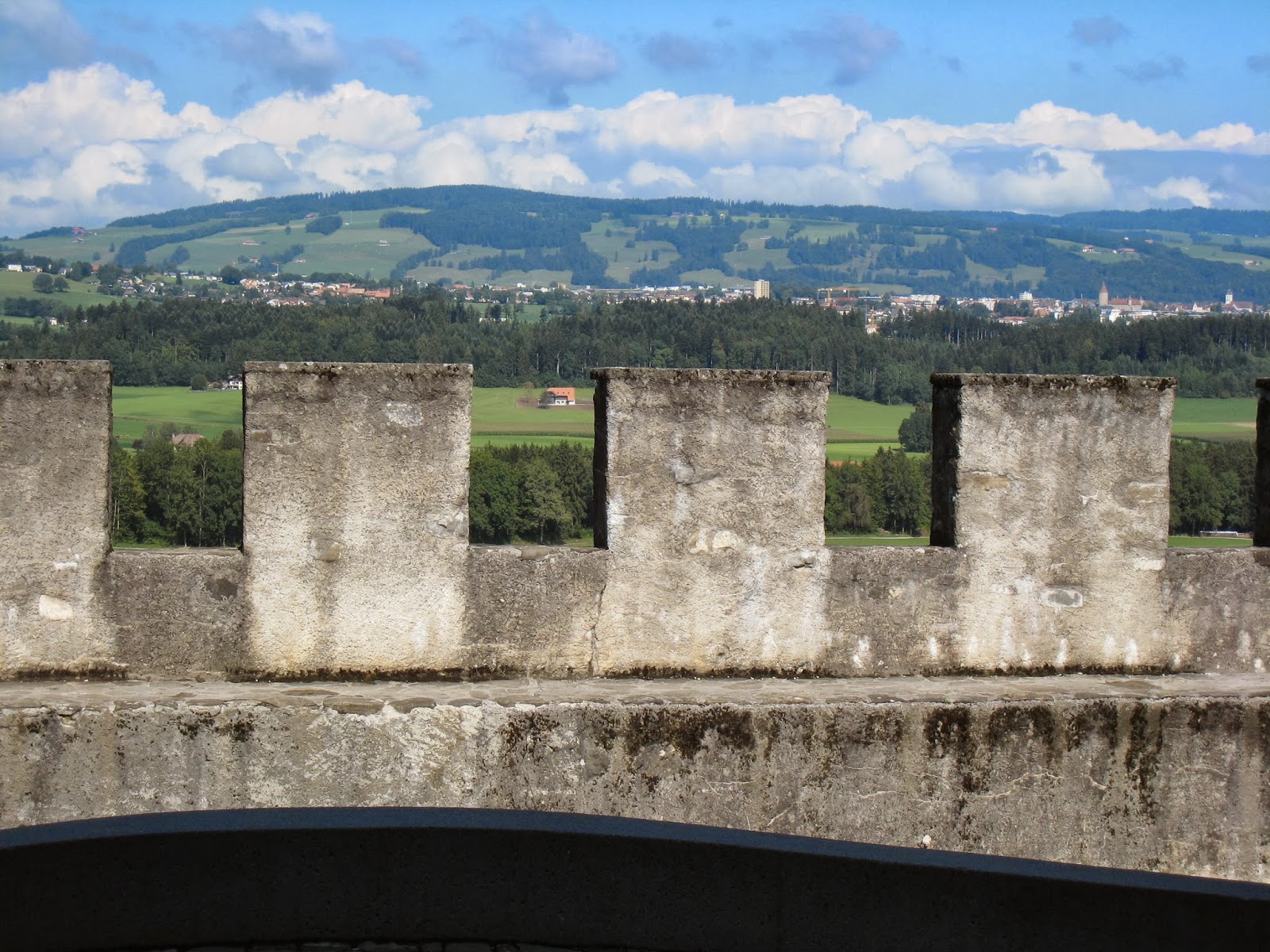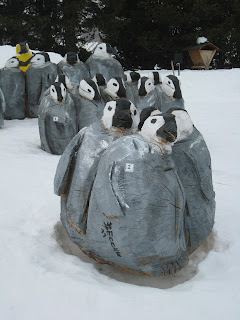How could I be in Switzerland, near the town of Gruyères, and not visit the town and factory? Thank Goodness the friends we are visiting, who live in the lovely nearby mountain village of Villars, bring us here.


There are some bumps along the way. Or, more accurately, some curvy roads. This necessitates a small stop to cure the car-sickness.
There's a lot to learn once we finally manage to get there. For example, 348 million kg of milk is made into 29,000 tons of Gruyère, with another 460 tons of Gruyère d'Alpage, produced in Switzerland. 2/3 of that is consumed in Switzerland -- by us, on this trip alone, it seems -- and the other 1/3 is exported to the rest of Europe and North America. Personally, I can't believe that France alone doesn't count for at least 2/3 of what's made, given how much Gruyère I see (and eat) there.
I know. The rest of you are probably not as interested in the cheese facts as I am. But even if cheese is not your passion, the town itself is worth a visit. It has to rank up there with the cutest of Alpine villages. The hilltop spot has fortified castle walls, medieval cobblestoned streets, cheery flower-box covered windows, real cows, and artistic chickens. What more could you want?








Well, you'd probably want chocolate. And you don't have to get very far. Luckily, our kind hosts feel the need to take us there, too. Thank goodness! The Cailler chocolate museum and factory tour is -- you will not be surprised to hear -- the visit preferred by the kids. This is one of the original mass-produced chocolates in the world, and still one of a very high quality. After the sample-it-all room, we walk out swearing we will never eat another piece of chocolate again, despite the fact that we have souvenir bags full of tins and bars of chocolates. Well, maybe not never again.


Do these kids look happy? That's because they know they're about to go in and gorge on endless chocolate samples. If we had taken the same photo after the session, their faces would've been greener than the boys' T-shirts. There is a looo-oooo-oooo-ooot of chocolate eaten.












































